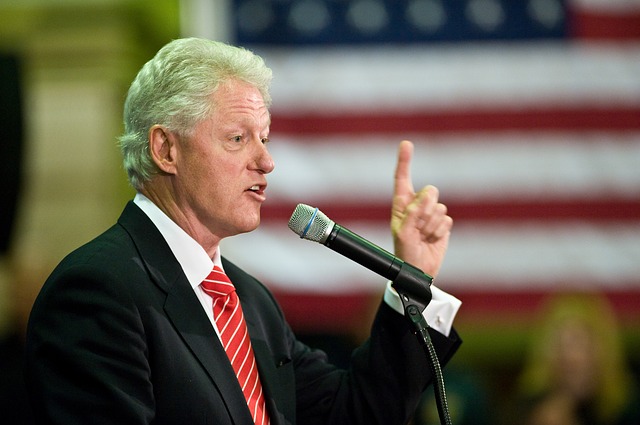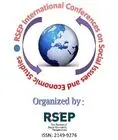
Political Thought
A Critique of Centrism
Read a summary using the INOMICS AI tool
The current moment is one defined by crisis. It can be found everywhere: in the climate, economy, mental health, even in democracy. It’s so ubiquitous as to have almost become the new norm. Amid the chaos, politics has struggled to keep up, its landscape is in permanent shift, its rulebook long thrown away. New formations have emerged, metastasized, sometimes died, and occasionally taken over - developments often surprising and hard to make sense of. What’s clear, though, is that polarisation has set in. From Bernie to Bolsanaro, from Modi to Make America Great Again, the voices now heard, the names that fill newspaper columns, are reminding us just how wide the political spectrum is. For many, it's a terrifying prospect, for others, it’s a thrilling and necessary reset. For the centre, as developments in the US and UK are showing, it may well spell death.
Increasingly sidelined, the one-time arbiter of sensible, down-to-earth politics, has seen its stock plummet and the centre-ground left barren, sparsely populated by members of a fading political establishment. As Mehdi Hasan has observed, ‘labels like 'centrist' and 'moderate,' which common sense tells us should reflect the views of a majority… have come to be applied to those who represent minority interests and opinions”. But why? How exactly has this come to pass? And where, if anywhere, does the future of the centre lie?
Suggested Opportunities
- Conference
- Posted 23 hours ago
45th RSEP International Multidisciplinary Conference
Between 4 Feb and 5 Feb in Lisbon, Portugal
- Summer School
- Posted 3 weeks ago
Max Planck Summer School on the Political Economy of Conflict and Redistribution 2026
Starts 7 Sep at Max Planck Institute for Tax Law and Public Finance in Berlin, Germany
A very brief and incomplete history
Like the monikers ‘left’ and ‘right’, the ‘centre’, as a political orientation, finds its roots in the French Revolution and the seating arrangements of the short-lived National Assembly. It designated those that sat between the high clergy and wealthy on the right of the chair, and the lower clergy and poorer folks on the left. It was there that contrasting ideas met, were mediated, and (sometimes) found synthesis.
In the centuries that followed, the ‘centre’ was sporadically appropriated as both a signifier and epithet. To a modern, anglophone ear, though, it’s mostly associated with the politics of the 1950s and 90s. President Dwight Eisenhowever was among its most strident torchbearers, committed to a politics he called ‘the middle ground’: socially-minded, yet limited governance that despised communism. Riding on his coattails, was UK Prime Minister, Harold Macmillan, whose political career was grounded in a similar set of principles he codified in, ‘The Middle Way’. Positioned between ‘socialism and pure capitalism’, it was underpinned by the enduring belief that ‘quiet, calm deliberation disentangles every knot’.
This period of supremacy abruptly ended in the 1960s, when centrism fell victim to the political convulsions that swept the west. In a context of counterculture and revolution, the considered nature for which it was known, looked staid and out of touch. Chastened, its proponents retreated from power, licking their wounds. They would remain out of favour for some time, forced to watch as on both sides of the Atlantic high-office swapped between left and right. Margaret Thatcher would remind centrists of their diminished status, goading them ‘for abandoning all beliefs, principles, values and policies’.
 The emergence, in the 90s, of ‘third way’ advocates, Bill Clinton and Tony Blair, marked the triumphant return and the advent of centrism’s most celebrated period. Despite hailing from nominally leftist parties, both ran on economic platforms promising public spending limits and balanced budgets. Barack Obama and David Cameron - their ideological successors - would later take up the mantle.
The emergence, in the 90s, of ‘third way’ advocates, Bill Clinton and Tony Blair, marked the triumphant return and the advent of centrism’s most celebrated period. Despite hailing from nominally leftist parties, both ran on economic platforms promising public spending limits and balanced budgets. Barack Obama and David Cameron - their ideological successors - would later take up the mantle.
So what does it actually stand for?
The centre has always been defined by what it’s in the centre of, and, thus, has shifted in response to broader political trends. In the early 60s, it was against the anti-war left; in the 80s it opposed Thatcher; and now, in 2020, it can't stand Trump. It knows well what it isn't; and less well what it is. This can - and often does - manifest in negatively framed messaging ill-suited for the catchy soundbites required of modern campaigning. Joe Biden’s election promise to ‘return to normalcy’, is illustrative - devoid of a forward vision, it’s failing to get pulses racing.
In spite of its unfixed state, centrism has become a byword for moderation and triangulation, of working across the aisle. Its recent proponents have typically been fiscally conservative, socially liberal, committed to open borders on trade, and invariably hard-lined on law and order. The scholar, Bo Winegard, has attempted, more explicitly, to codify its core tenets in his ‘Centrist Manifesto’, claiming that ‘political progress is achieved by caution, temperance and compromise’, and urging against ‘dramatic alterations that [could] upset a reasonably successful social order’ - the words ‘reasonably successful’ doing a lot of work. Which brings us to the pertinent question: in a world of Trump, Brexit, and rising temperatures what role, if any, can this amalgam of principles expect to play?
Centrism today
In the clamoring of current discourse, centrists stake claim to the only escape route away from the bickering and bellicosity. Uniquely positioned above the petty point-scoring and time-wasting agendas of the extremes, and guided, according to Winegard, by a mantra of ‘careful consideration and slow implementation’, they alone can ensure a return to sensible politics. Abstractly, and without context, this offer sounds persuasive, indeed, it feels close to common sense. Applied to the current moment, however, and its shortcomings come into focus.
Firstly, the things in which centrism traffics - moderation, incremental change, etc. - lose their appeal in crises. For in hard times like these, it can be difficult to separate suggestions of pragmatic tinkering from attempts to preserve the status quo. And to many the status quo is part of the crisis - it’s complicit. Insisting on the existence of moral equivalences on all sides - a core centrist belief central to compromise - has also drawn ire for being a privileged position available only to those insulated from the sharp-end of inequality and the climate crisis. Without this protection - that growing numbers are also deprived - it follows that their calls for change would be far more urgent.
Consequently, assurance is increasingly found in pledges that acknowledge the scale of what is faced, however extreme, and commit to decisive, transformative measures. Calls to ‘drain the swamp’ and demands for ‘medicare for all’ speak to this feeling, and have gained traction at opposite ends of the spectrum because they accept the gravity of people’s concerns and promise to tackle them head-on. Whether its widespread political alienation or concerns over healthcare, the language, and implied commitment, sound appropriate in scope.
This is what centrism runs into time and again. On today’s biggest questions - generational indebtedness, housing crises, spiralling inequality, job insecurity - questions that threaten opportunity, livelihoods, lives even, it’s proposals sound insufficient in scale. How, for instance, does the politics of moderation propose to shift the US$1 trillion debt from the shoulders of American millennials? Is it even possible for the ‘slow implementation’ of anything to address the rampant inequality that’s dividing communities?
And what of the most important question of all: climate breakdown? The threat posed by the climate is existential and can only be navigated through radical action, as part of a long-term vision - this is roundly accepted. With the stakes so perilously high, relying on a political tradition steeped in a culture of compromise may well be foolhardy. For the planet to survive in any habitable form overhaul is needed, an overhaul of energy, of transport systems, of consumption. Despite its flaws, the Green New Deal (GND) was an attempt at this, legislation proportionate to the size of the problem, climate policy informed by scientists demands for ‘war-like’ mobilisation. Many centrists, however, balked at the idea, Nancy Pelosi called it ‘too broad’ and the Blue Dog Coalition of Democrats would rather prohibit a federal deficit running in peacetime, making the GND, and a whole host of redistributive investment programs, impossible.
A choice beckons
Amidst political polarisation and burning of the planet, the future of centrism is unsure. Its failure to formulate coherent responses to the biggest issues of the day has left it flirting with irrelevance, and representing, as Hasan commented, only minority interests and opinions. To guarantee its future, it has two options: double-down and continue to force old methods on new issues, or recognise its self-imposed limitations and think bigger. Now is not the time for caution, but for assertive action. To miss this opportunity is to perish.
-
- PhD Program
- Posted 3 days ago
Doctoral Program in Economics – 25 doctoral positions
Starts 1 Sep at Graduate School of Economic and Social Sciences (GESS), University of Mannheim in Mannheim, Germany
-
- PhD Program
- Posted 2 days ago
Graduate Program in Economics and Finance (GPEF) - Fully funded Ph.D. Positions
Starts 1 Sep at University of St.Gallen in Sankt Gallen, Switzerland
-
- Assistant Professor / Lecturer Job
- Posted 1 week ago
Clinical Assistant Professor in the Robert C. Vackar College of Business and Entrepreneurship/Economics
At University of Texas Rio Grande Valley in Edinburg, United States













